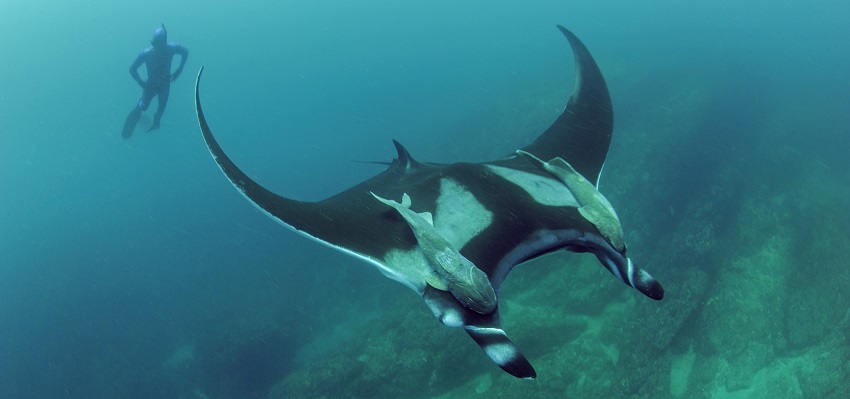Podcast: Play in new window

BOB HIRSHON (host):
Manta rays stay close to home. I’m Bob Hirshon and this is Science Update.
Manta rays glide gracefully through the water, filter feeding on everything from tiny zooplankton to small fish. Scripps Institution of Oceanography ecologist Joshua Stewart and his team tracked four populations of oceanic mantas. They expected to find that the gentle giants migrate great distances to follow prey like other large ocean creatures.
JOSHUA STEWART (Scripps Institution of Oceanography):
Instead, they appear to be largely staying put.
HIRSHON:
They also report in the jounal Biological Conservation that the populations don’t interbreed. Stewart thinks the lack of movement is due to flexible feeding habits.
STEWART:
They’re able we think to shift what they’re feeding on as that prey resource changes in abundance across seasons, instead of migrating a long distance to find that same resource somewhere else.
HIRSHON:
He says understanding the manta’s range and feeding behavior is key to protecting them. I’m Bob Hirshon, for AAAS, the science society.
Story by Susanne Bard
